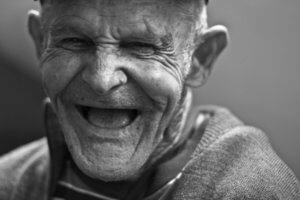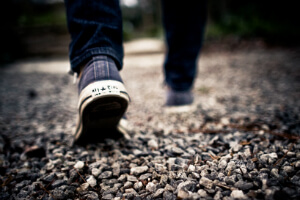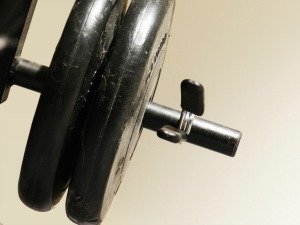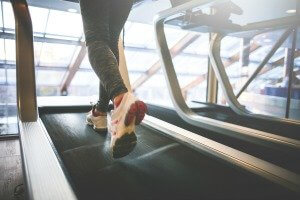I’ve had a lot of requests to print a talk I recently gave. Here it is. — Janet
Recently, I took part in a large, two-day dementia seminar in Prescott, Arizona, presented by Prescott United Methodist Church for the community. There was a full house both days; hundreds of people came, which shows that the need is great for all kinds of information about dementia.
But with all the doctors, nurses, social workers, financial people, and other experts talking about caring for people with dementia, and caring for the caregivers, and the desperate needs for daycare, home care, and for respite care so that exhausted, stretched-to-their-limit caregivers can have a break, there was only one person who talked about preventing dementia. I was it. What’s wrong with this picture?
Why was I the only one? Why aren’t very many doctors talking about this? Why do so many patients and their families hear that there is nothing they can do? I wasn’t there to paint an artificially rosy picture. I know what it’s like to try to care for someone with dementia; I know what it costs, financially, physically, mentally, spiritually. It’s happened to two people I love, and it’s heartbreaking.
But I also know from my work as a science writer that dementia is not always inevitable, and new research has shown that even when someone has Alzheimer’s, changes in diet, sleep, and exercise may make symptoms better.
Many people have asked for copies of my talk, so here it is. Longtime readers of this blog will find some of this material familiar, but I’ve collected it all into one place. I’m sharing it with you now because I want you to know that there really is hope.
* * *
I’m going to start talking about the brain via an organ I know a little bit better: the prostate. Bear with me.
Scientists have long known that, at autopsy, many men are found to have prostate cancer that never spread, never caused a problem, and never needed to be treated. They died with it, not of it. Sometimes, diseases only show up at autopsy. Men live a good long life and never show any signs of disease, and yet, when they die, there it is under the microscope. But the disease never got out of hand. Men died with it, not of it.
I did not know, until I interviewed Dr. Richard O’Brien, that the same thing happens with Alzheimer’s. O’Brien, who was Chairman of Neurology at Johns Hopkins Bayview Medical Center, now Chairman of Neurology at Duke, told me that some people, at autopsy, have Alzheimer’s pathology. They have the telltale brain plaques and protein tangles seen in Alzheimer’s disease – but they never develop any cognitive impairment. Other people have the exact same pathology, and they die of heartbreaking dementia. Why is this?
 O’Brien sees opposing forces at work in the brains of people as they age.
O’Brien sees opposing forces at work in the brains of people as they age.
In Alzheimer’s, the tipping point – the game-changer, the key factor that weights the scales toward dementia – seems to be ischemic disease. Stroke, or mini-stroke. “With a given amount of Alzheimer’s disease pathology in the brain,” O’Brien told me, “there are two forces at work. One is driving you to become demented, and the other is protecting you from being demented. The biggest force that we’ve found thus far is cerebrovascular disease.”
This does not mean that everyone who has had a stroke or who has cerebrovascular disease is going to get Alzheimer’s. That’s not what he’s saying at all.
What it does suggest is that if someone has significant atherosclerosis, or has had a stroke, even if it’s asymptomatic – AND also has the plaques and tangles, that is a very powerful predictor that he or she will develop dementia.
The body has a limited capacity for insults. Stroke is an insult. Plaques are an insult. Think of a boxer who can take a lot of punches, but he can only withstand so much. The brain has a tipping point, too. O’Brien believes that “either one of these alone isn’t enough, but the two existing together in the same brain are enough to tip you over.”
Here’s some very good news:
Doctors are getting better at spotting and treating the risk factors that lead to stroke. Two recent studies found that the incidence of dementia has declined over the last 30 years. “The primary reason for that is the treatment of coexisting cardiovascular risk factors,” O’Brien says.
None of these treatments prevents the Alzheimer’s pathology from building up – but they “prevent it from becoming manifest. So you die with your plaques and tangles, but you’re still cognitively intact.”
So, what can you do to protect your brain?
One thing is Exercise. In a report published in the Annals of Internal Medicine, scientists followed about 20,000 people who took part in treadmill testing in the 1960s as part of a cardiovascular study. Today, these people are in their eighties, nineties, or are deceased. “The scientists found that the people who had been in the fittest 30 percent of that group had a dementia rate that was half that of the other people in the cohort… One of the side effects of regular exercise is a significant reduction in your risk of dementia.”
 Another huge factor is cognitive reserve, and this is from education. It turns out that people who go to college tend to have more cognitive reserve than people who don’t. If you didn’t go to college, don’t worry. If you read and learn a lot, you are building up a cognitive reserve, too. Learning a language or playing a musical instrument, doing research for your work, or singing in a choir – basically, anything that challenges your brain, as opposed to sitting on the couch and staring passively at the TV – these have beneficial effects on your ability to think, on the brain’s ability to make neural connections.
Another huge factor is cognitive reserve, and this is from education. It turns out that people who go to college tend to have more cognitive reserve than people who don’t. If you didn’t go to college, don’t worry. If you read and learn a lot, you are building up a cognitive reserve, too. Learning a language or playing a musical instrument, doing research for your work, or singing in a choir – basically, anything that challenges your brain, as opposed to sitting on the couch and staring passively at the TV – these have beneficial effects on your ability to think, on the brain’s ability to make neural connections.
Not being obese plays a similar role, too. Fat, especially belly fat, changes your levels of hormones. It also increases your risk of dying of cancer. Scientists are still figuring it out, but chances are good that obesity is not of great benefit to the brain.
“People with certain types of personality traits are less likely to get demented,” says O’Brien. Wait, personality traits?
 People who are positive and upbeat seem to have some protection from dementia. Why? Well, it may be that people who are positive are more likely to educate themselves and exercise. The good news is that positivity and resilience can be learned. You can actually become more positive by working on gratitude, being around more positive people, and being more connected to your family and community.
People who are positive and upbeat seem to have some protection from dementia. Why? Well, it may be that people who are positive are more likely to educate themselves and exercise. The good news is that positivity and resilience can be learned. You can actually become more positive by working on gratitude, being around more positive people, and being more connected to your family and community.
Positive people may also be more likely to do crossword puzzles or sign onto Luminosity, although O’Brien doesn’t think doing a puzzle here or there is enough by itself; in other words, you probably can’t Luminosity yourself out of dementia. Now, one study published in the New England Journal of Medicine showed that people who did crossword puzzles had a lower rate of dementia than did people who spent a lot of time watching TV. But O’Brien thinks the brains of people who choose to do crossword puzzles are different from those of people who like to watch TV. “If you forced the people who are watching TV all the time to do crossword puzzles, would they have a lower incidence of dementia? I doubt it.”
Cognitive reserve is a very robust thing, according to O’Brien. “If you look at the neurons of people with high levels of cognitive reserve, they’re pretty resistant to the toxic effects of Alzheimer’s disease pathology. They actually have bigger neurons in the key areas of the brain. Their neurons are more healthy, even if there’s a lot of Alzheimer’s disease pathology.”
And then there’s diet.
O’Brien suspects that the Mediterranean diet might have a significant effect on dementia, because it also has significant effects on cardiovascular health. “The data’s pretty clear that if you can prevent cerebrovascular disease, your chances of becoming demented are much lower.”
In 2014, scientists at UCLA published a priority research paper in the journal, Aging, that showed for the first time, memory loss being reversed. It wasn’t because of a drug or procedure, but a comprehensive and personal approach that showed how Alzheimer’s is a complex disease, affected by diet, exercise, and even sleep. All of these things contribute to the brain’s plasticity, said Dale Bredesen, the study’s principal investigator. Ten people with memory loss, some with brain scan-confirmed patterns of Alzheimer’s, participated in a small study called MEND, for Metabolic Enhancement for NeuroDegeneration.
The participants made dramatic lifestyle changes. They avoided simple carbs, gluten, and processed foods. They ate more fish, did yoga, and meditated. If they didn’t sleep well, they took melatonin. They took vitamin B-12, vitamin D-3, and fish oil. Within 6 months, 9 patients had a noticeable improvement in memory. One patient, who was in the late stages of Alzheimer’s, did not show improvement, so there may be a point at which it’s too late. But these findings suggest that at least early on, changing your metabolism can improve your cognitive function.
Six of the people in the study who’d had to quit working were able to return to their jobs. Some patients were followed up to two and a half years, and the memory improvements remained. Larger studies are under way.
Let’s come back to exercise.
 A study led by scientists from the University of Maryland School of Public Health, published in the Journal of Alzheimer‘s Disease, found that just 12 weeks of moderate exercise – basically, walking fast enough on a treadmill to get your heart rate up, but not so much that you couldn’t carry on a conversation with someone else while you did it – made a difference in how people’s brains functioned.
A study led by scientists from the University of Maryland School of Public Health, published in the Journal of Alzheimer‘s Disease, found that just 12 weeks of moderate exercise – basically, walking fast enough on a treadmill to get your heart rate up, but not so much that you couldn’t carry on a conversation with someone else while you did it – made a difference in how people’s brains functioned.
It made their brains work better; their neurons were more efficient. People could remember things more easily, and their brains didn’t have to work as hard to do it.
Scientist, J. Carson Smith, of the University of Maryland’s Neuroimaging Center, and said, “No study has shown that a drug can do what we showed is possible with exercise.”
The people in the study weren’t spring chickens, either. They ranged in age from 60 to 88. They weren’t athletes – far from it; they were considered “physically inactive older adults.” Some had already shown mild cognitive impairment. The people in both groups – those with the mild impairment and those with healthy brain function – improved their cardiovascular fitness by about 10 percent in the three months of the program.
They also improved their memory. MRI brain scans taken before and after the study showed “a significant improvement in 11 brain regions.” Even more exciting, the places in the brain that got better are the same ones that are affected in Alzheimer’s – the precuneus region, the temporal lobe, and the parahippocampal gyrus. Their word recall – remembering as many as possible out of a list of 15 words – improved.
What does this mean for you? It means that, whatever age you are, you can make your brain work better even with a small amount of effort. You don’t have to be in marathon-running shape. You don’t have to go grunt and sweat and dead-lift huge weights. Just walk for two and a half hours a week – 30 minutes a day, five days a week. If you don’t have 30 minutes, do it twice for 15 minutes. Any effort is going to pay off.
Other Things:
Prevent frailty. Frailty is your enemy. But O’Brien says: “I don’t think that falling apart when you get old is something that has to happen.”
Recently, Johns Hopkins geriatrician Jeremy Walston looked at what healthy older people have in common — at what they eat and don’t eat, and how they live – and came up with some practical tips.
Nutrition: Make Every Bite Count
If you do it right, just about everything you eat can help your body. This doesn’t mean you have to eat just nuts and berries or be a food martyr who never eats comfort food. What does it mean?
Eat Fresh Fruits and Veggies
 I know, duh. Who doesn’t know that fresh fruits and vegetables are good for you? But what’s in them matters, too. Walston says potassium is important, and “Fresh fruits and vegetables are rich in potassium.”
I know, duh. Who doesn’t know that fresh fruits and vegetables are good for you? But what’s in them matters, too. Walston says potassium is important, and “Fresh fruits and vegetables are rich in potassium.”
When you get your blood pressure tested, it’s a fraction, one number over another. That top number is systolic blood pressure, and potassium can lower it by several points. It also helps regulate the heart rhythm. If you are eating foods rich in potassium, this also means you’re not loading up on saturated fat, and this will help lower your cholesterol.
Get More Protein
As we get older, we need more protein. “Protein helps muscles function better, and it is also important to help maintain muscle mass.” You don’t have to spend big bucks; you can get salmon in a can, or yogurt, or eggs, or an energy bar. Epic Bars are good sources of meat protein when you’re on the go.
Get Plenty of Vitamin D
Vitamin D helps keep your bones strong. It also helps keep your muscles, heart, brain and immune system healthy, and can help prevent cancer. Having low levels of Vitamin D is bad: A study published in the Archives of Internal Medicine found that people with the lowest levels of Vitamin D had more then twice the risk of dying from heart disease as people with higher levels. You can get it from sunlight, 20 minutes a day twice a week or so, or in a supplement. The National Institutes of Health recommends 600 international units of Vitamin D a day if you’re under 70, and 800 IU a day if you’re over 70.
Get your shots
Lower your risk of getting the flu, or pneumonia, or shingles by getting a shot. Anything you can do to prevent being laid up is a good thing.
Keep Moving
My husband, Mark Worthington, is a gastroenterologist, and he tells me that many of the older people he sees fall into two categories. He always asks them what they do, and some will say, “We volunteer, we hike, we love to go out to dinner with our friends.” Others basically do nothing. All day. Not good. These people tend not to do as well.
Jeremy Walston says, “Stay active as long as possible. Don’t sit for long periods of time, especially in the late afternoon or evening. Studies show that those are low-activity times for many people, so it’s good to try to boost your activity during those times.” Go for a walk after dinner. Walking is good; in fact, you should walk a lot, or do some aerobic activity – there’s plenty to choose from.
“It’s also important to do exercises that help you stay flexible, that help your balance and gait, and that help strengthen your muscles. Don’t forget your shoulders,” which are important for maintaining core body strength and higher levels of function. And if you have an “orthopedic issue,” like knee or hip trouble, address it, so you can keep moving as long as possible.”
However:
Don’t Fall
Falling is bad. The body literally takes a hit when you fall. Many older people, who otherwise have been doing pretty well, take a turn for the worse after a fall. Just being laid up for a few days can be difficult for the elderly because they tend to lose strength quickly. The best way not to fall is to prevent it, says Walston. “Things that can make you fall include: not watching your medication; vision problems; weakness in the lower extremities; and balance and gait problems.”
 One huge risk factor is easy to fix: “low lighting and a cluttered living area.” Make sure your rooms are well lit – that you not only have enough lights, but that the bulbs are high-powered enough so you can see where you’re going. And go after the clutter. It doesn’t take much – maybe a stack of books or magazines that slips over, a puzzle left by a grandchild on the floor, or pet toys – to make a walkway treacherous. Sometimes, you’re so used to looking at clutter that you don’t see it. This is why Walston recommends bringing in a friend or relative who is not used to your home, who can see potential trouble spots you haven’t noticed.
One huge risk factor is easy to fix: “low lighting and a cluttered living area.” Make sure your rooms are well lit – that you not only have enough lights, but that the bulbs are high-powered enough so you can see where you’re going. And go after the clutter. It doesn’t take much – maybe a stack of books or magazines that slips over, a puzzle left by a grandchild on the floor, or pet toys – to make a walkway treacherous. Sometimes, you’re so used to looking at clutter that you don’t see it. This is why Walston recommends bringing in a friend or relative who is not used to your home, who can see potential trouble spots you haven’t noticed.
A personal note: When my aunt, who had dementia caused by a stroke, had to go to the nursing home, we asked what we could bring for her room. They said: Only one thing, because clutter makes demented people more agitated. I figure, if demented people are the canary in the coal mine, and clutter stresses them out a lot, it most likely stresses us out, too, on a low level. So not only can you trip on it, clutter agitates.
You can lower the odds of falling by working on your balance. Tai Chi is a great way to do this, and so is yoga.
What else?
“Cognitive risk factors include diabetes, elevated lipids, and high blood pressure,” says Walston. Medications can keep all of these problems in check, which will help your blood vessels, which will help your brain.
Poor hearing: If you don’t feel connected, you may tend to withdraw from the conversation, smiling politely, not engaging, because you don’t know what people are saying. This is bad. “Get a hearing aid if you need one.” It won’t just help your hearing; it will help your brain. There’s a feedback loop: When you stay connected, you are giving of yourself, talking and listening, and that stimulates your brain. When you don’t hear, you just sit there and don’t participate, you’re not getting that stimulation, and if you don’t use your brain as much as possible, you may lose function.
Depression: If you are depressed, you are going to be withdrawn, you may not eat or sleep very well, and you may not get enough exercise. Treating it is good “cognitive protection,” says Walston.
Finally, Stay connected. Talking to people — volunteering, driving, interacting with others in church, clubs, or other groups, being around family or friends – protects your brain.
©Janet Farrar Worthington


 O’Brien sees opposing forces at work in the brains of people as they age.
O’Brien sees opposing forces at work in the brains of people as they age.  Another huge factor is cognitive reserve, and this is from education. It turns out that people who go to college tend to have more cognitive reserve than people who don’t.
Another huge factor is cognitive reserve, and this is from education. It turns out that people who go to college tend to have more cognitive reserve than people who don’t. People who are positive and upbeat seem to have some protection from dementia. Why? Well, it may be that people who are positive are more likely to educate themselves and exercise.
People who are positive and upbeat seem to have some protection from dementia. Why? Well, it may be that people who are positive are more likely to educate themselves and exercise. A study led by scientists from the University of Maryland School of Public Health, published in the Journal of Alzheimer‘s Disease, found that just 12 weeks of moderate exercise – basically, walking fast enough on a treadmill to get your heart rate up, but not so much that you couldn’t carry on a conversation with someone else while you did it – made a difference in how people’s brains functioned.
A study led by scientists from the University of Maryland School of Public Health, published in the Journal of Alzheimer‘s Disease, found that just 12 weeks of moderate exercise – basically, walking fast enough on a treadmill to get your heart rate up, but not so much that you couldn’t carry on a conversation with someone else while you did it – made a difference in how people’s brains functioned. I know, duh.
I know, duh. One huge risk factor is easy to fix:
One huge risk factor is easy to fix: I start with the “barbell bench press.”
I start with the “barbell bench press.” Then I do 20 minutes on the treadmill; I used to run, now I walk briskly.
Then I do 20 minutes on the treadmill; I used to run, now I walk briskly.